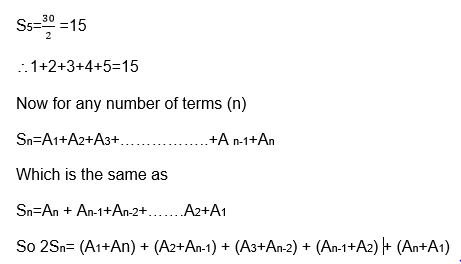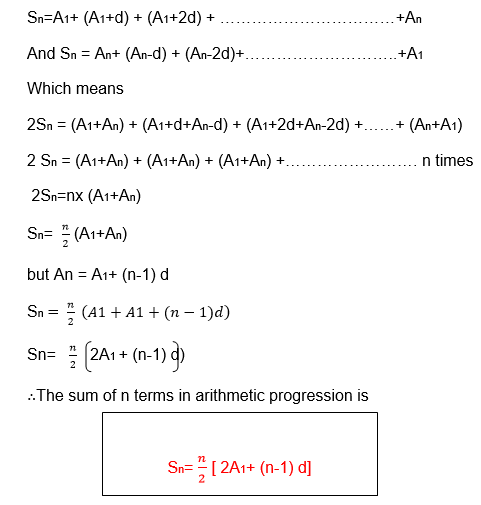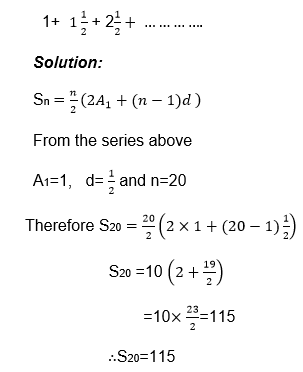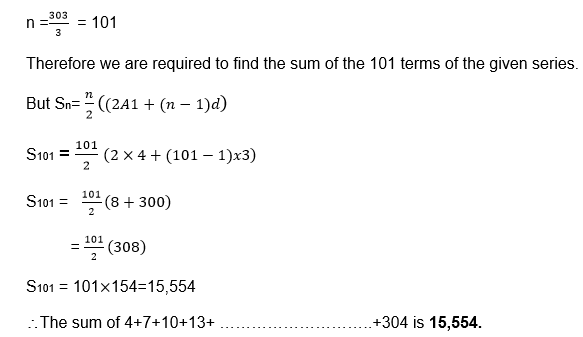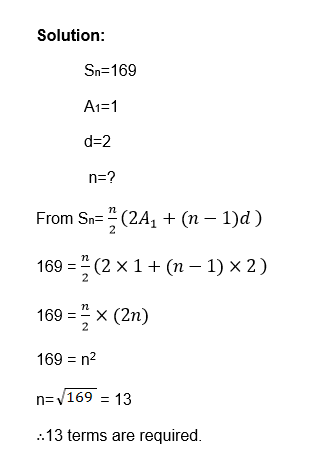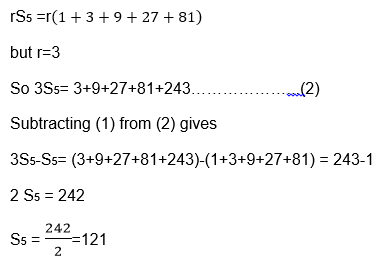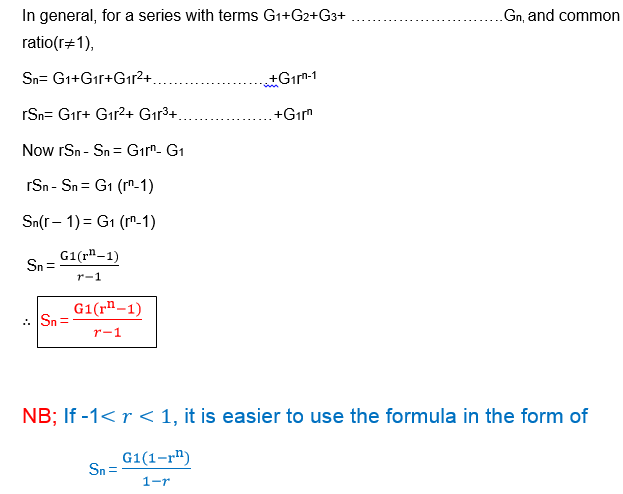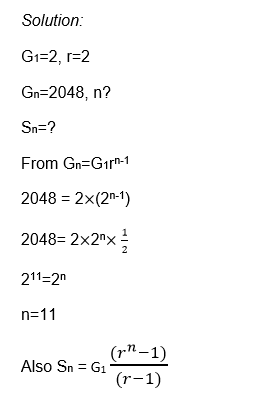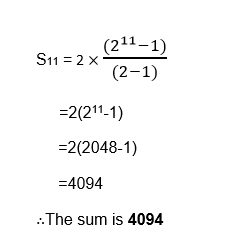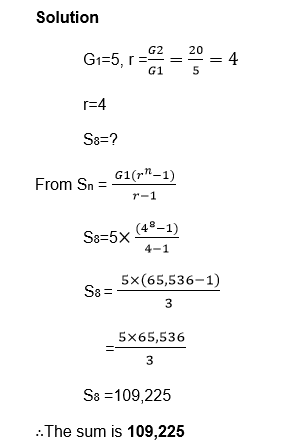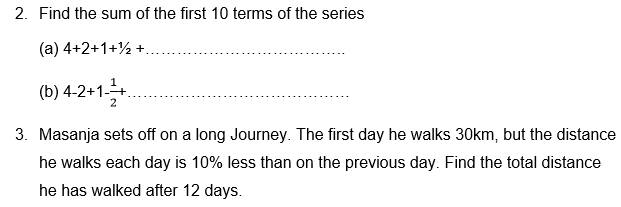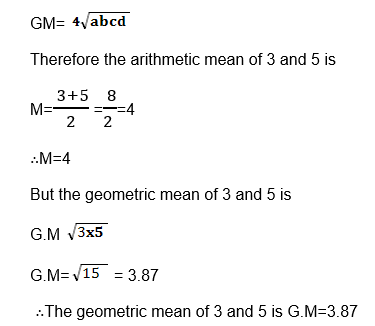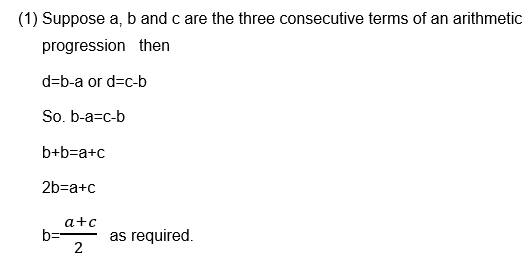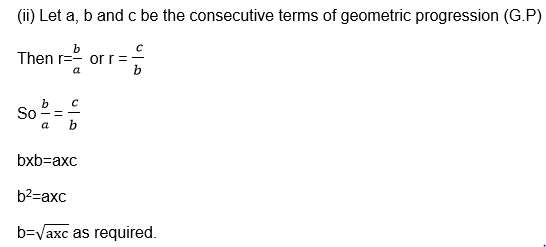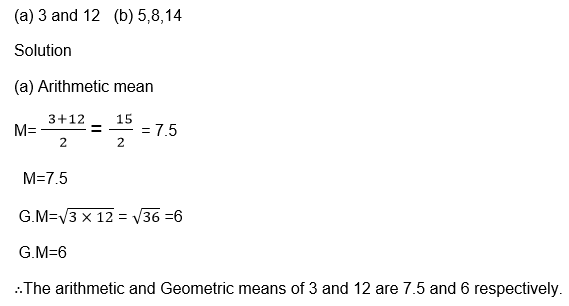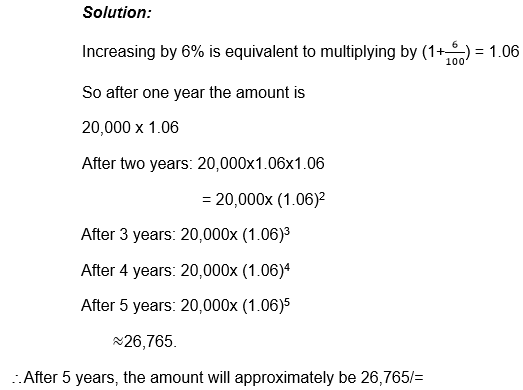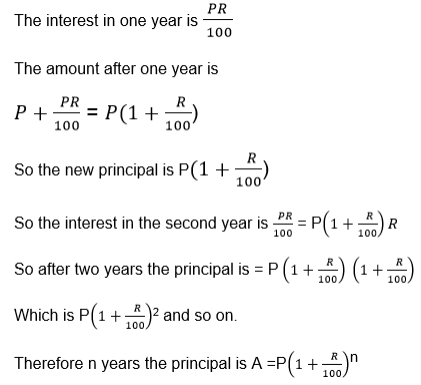JOIN US WHATSAPP
CLICK HERE
JOIN US TELEGRAM
CLICK HERE
TOPIC 5: SEQUENCE AND SERIES
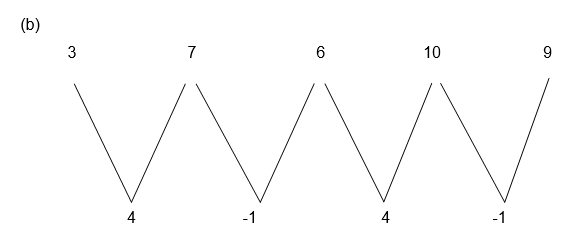
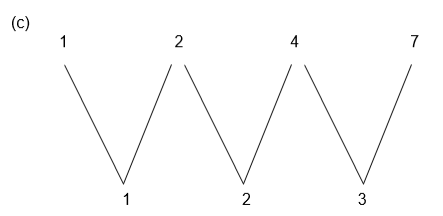
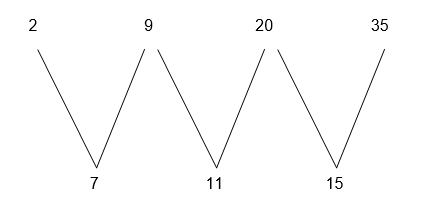

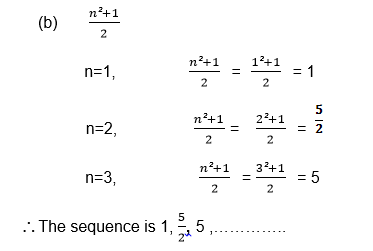
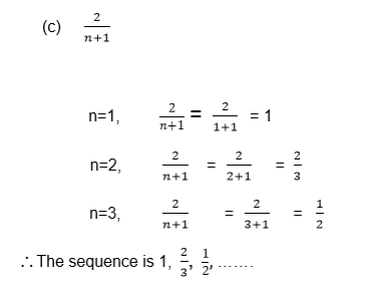
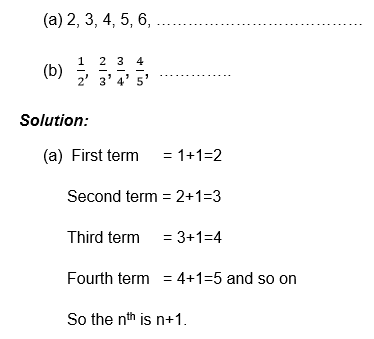
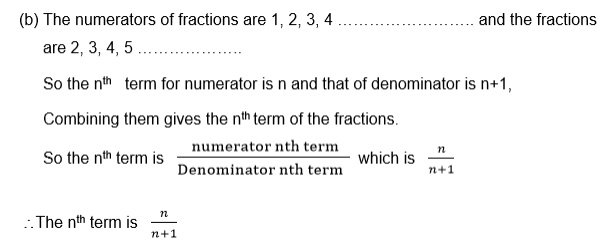
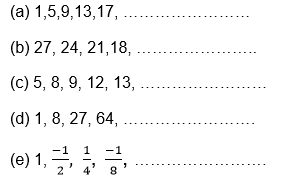
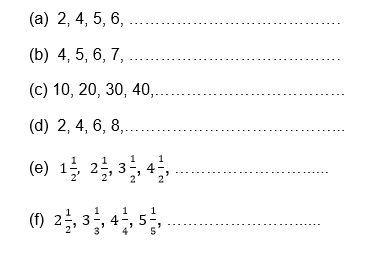


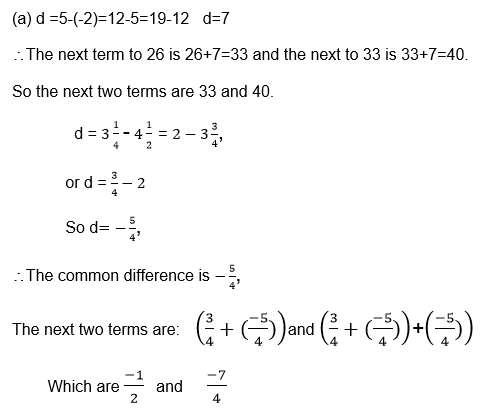
Geometric Progression (G.P).

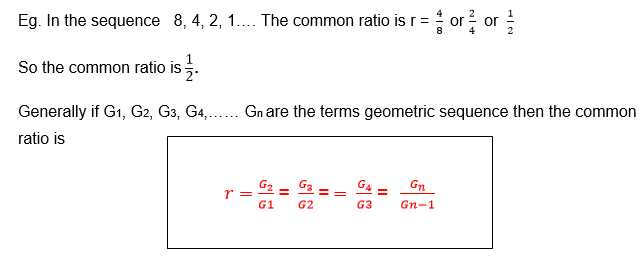

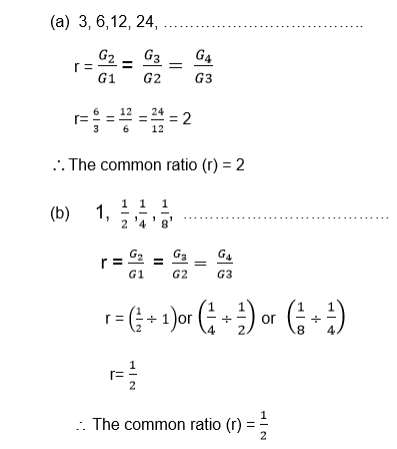
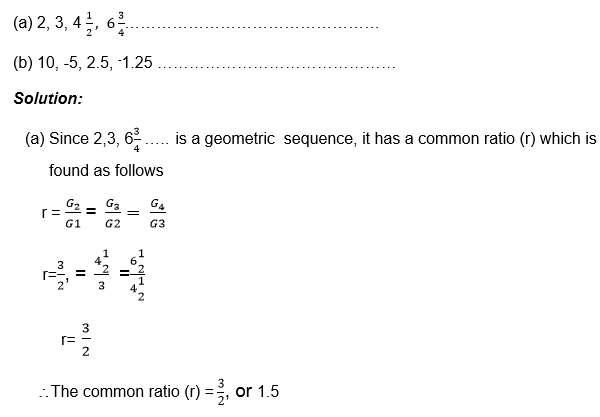
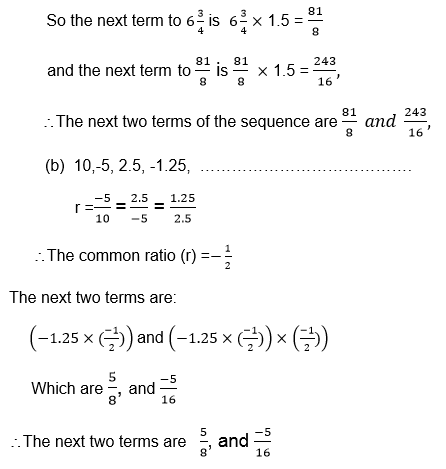
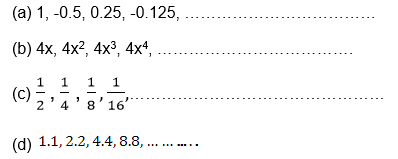
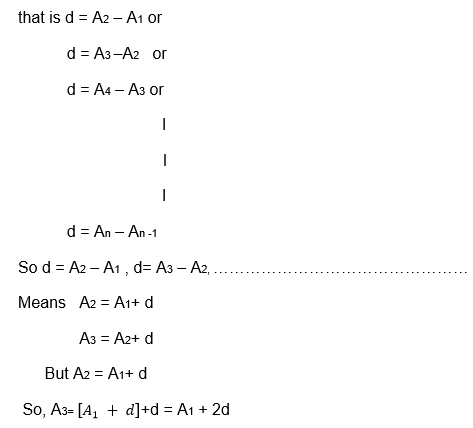
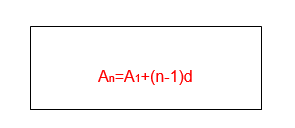
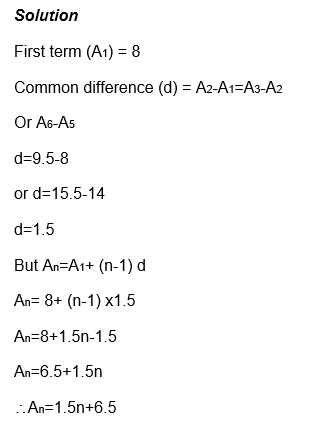
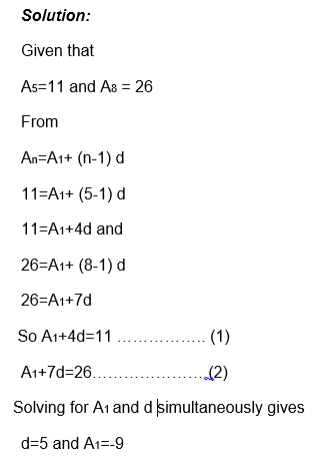
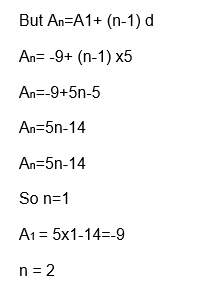
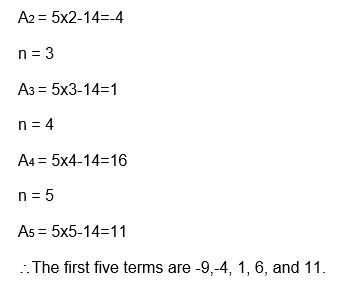
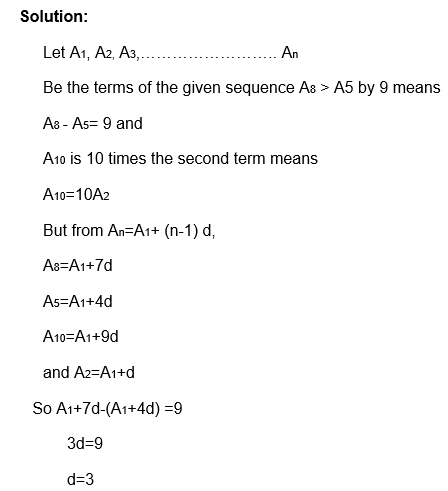
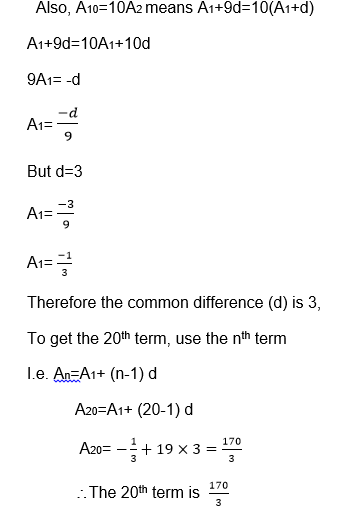
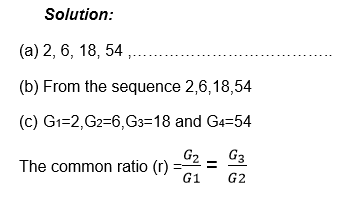
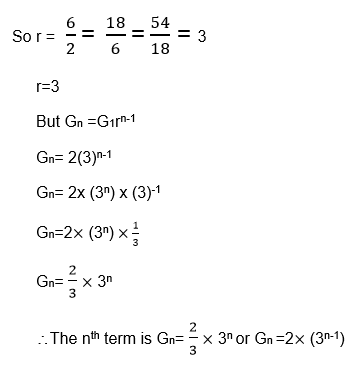
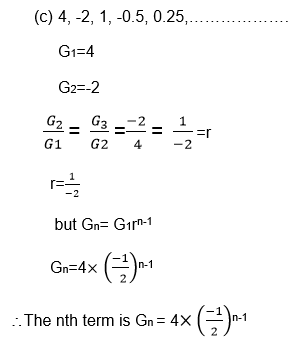
Sequences
The Concept of Sequence
Explain the concept of sequence
A Sequence is the arrangement of numbers or is a list of numbers following a clear pattern such that one number and the next are separated by comma (,).
Example: a1, a2, a3, a4 ……………………..
NB: Each number found in a Series or Sequence is called a term.
Example 1
Find the next three terms in the following sequences.
- 5, 8, 11, 14, 17,………………………………
- 3, 7, 6, 10, 9, …………………………………
- 1, 2, 4, 7, ………………………………………
- 2, 9, 20, 35, …………………………………
Solution:
(a)You can see that each term is less to the next by 3.
So next three terms are (17+3),(17+3+3) and 17+3+3×3)
Which are 20, 23, and 26

Alternately add 4 and subs tract 1. The sequence then extends to 13, 12, 16

We see that the difference is increasing by 1 each time. So the next three terms are 11, 16 and 22.

The differences are increased by 4 each time, so the next three terms are 54, 77 and 104.
Example 2
Write down the first three terms in the sequences where the nth term is given by the formulae.



Example 3
The kth term of a series is k2 + 4
Find the sum of the first four terms in the series
Solution:
k=1, k2+4=12+4=5
k=2, k2+4=22+4=8
k=3, k2+4=32+4=13
k = 4, k2+4 = 42+4 = 20
So the series is 5+8+13+20 and its sum is 46
Example 4
Find the nth term of the following sequences:


Exercise 1
1. Write down the next three terms in the following sequences.

2. Find the first three terms in the sequence:
- 5n+2
- 1-3k
- n2+n+1
- 2n
3. Find the sum of the first four terms of the series where the kth term is given by:
- 5k+3
- k3-1
- 2k
4. Find the nth term of these sequences:

An Arithmetic Progression (AP) and Geometric Progression (GP)
Identify an arithmetic progression (AP) and geometric progression (GP)
When the series or sequence is such that between two consecutive terms there is a difference which is fixed, then the series or sequence is called an arithmetic progression (A.P)
The fixed difference (number) between two consecutive terms is called the common difference (d)
Example 5
In the sequence 4, 7, 19, 13, 16 there is a common difference which is
7-4=10-7=13-10=16-13=3.
So the common difference (d)=3.
Note that in arithmetic progression (A.P) the difference between two successive terms is always the same.
Sometimes numbers may be decreasing instead of increasing, the arithmetic sequence or series while terms decrease have a negative number as a common difference.
Example 6
The common difference of the sequence 6, 4, 2, 0, -2, …………………… is?
In general if A1, A2, A3, A4, ……………………… An are the terms of the arithmetic sequence , then the common difference is ;

Example 7
For each of the following sequences, find the common difference and write the next two terms.

Solution:

Exercise 2
1. Find the common difference for each of the following sequence:
- 11, 14, 17, 20, …………………………………
- 2, 4, 6, 8, 10, ……………………………………
- 0.1, 0.11, 0.111, 0.1111 , …… … … … … …
- y, y+3, y+6, y+9, y+12, … …… … … … ……
2. State whetherthe following sequence are arithmetic or not:
- 2, 5, 8, 11, 14, …………… ……………… ……
- 1, 3, 4, 6, 7, 9, 10, ………………………………
- y, y + x, y+2x, y+3x, … ………… ……
3. The temperatureat a mid day is 30c, and it falls by 20c each hour. Find the temperature at the end of the next four hours.
Geometric Progression (G.P).
When the series or Sequence is such that between two consecutive terms there is a ration which is fixed, then the series or sequence is called a geometric progression (G.P)
The fixed ratio(number) between two successive terms is called the common ratio (r).
Example 8
In 2, 4, 8, 16, 32, … … …… … … …….
There is a common ration which is

Note that like in arithmetic progression (A.P), in geometric progression (G.P) the common ratio does not change.
Also the terms may be decreasing instead of increasing, the geometric sequence or series whose terms decrease have a positive common ratio which is less than 1 for the progression with positive terms.

Example 9
For each of the following sequence find the common ratio.


Example 10
For the following geometric sequences, find the common ratio and write down the next two terms:

The next term is found by multiplying the term considered to be the last term by the common ratio.

Exercise 3
1. Which of the following sequences are geometric
- 1, 2, 4, 8, 16, ……………………………………
- 2, 6, 18, 54, 162, …………………………………
- 1, -1,1,-1,1, ………………………………………
- x2, 2x3, 4×4, 8x3…………………………………
- 1, 2, 4, 7, 10, ………………………………………
- 0.1, 0.2, 0.3, 0.4, 0.5, ……………………………
- 3, 6, 9, 12,15, ……………………………………….
2. Find thecommon difference for each of the following geometric progressions (G.P)

3. Find thenext term of the sequence 2, 10, 50, 500,………………….
4. The populationof a town is decreasing so that every year the population declines by a quarter. If the population is originally 100,000. What will it be after 5 years?
The General Term of an AP
Find the general term of an AP
If A1, A2, A3, …………………An are the terms of an arithmetic sequence, then there is a common difference d which is given by
d = A2 – A1 = A3 – A2 = An – An – 1

But . A3 = A1 + 2d which means
A4 =[ A1+2d]+d
= A1 + 3d
Putting into consideration this pattern, it is true that
A5 = A1 + 4d
A6 = A1 + 5d
An = A1 + (n-1)d
Where An is the nth term
The nth term of the sequence with first term A1 and common difference d is given by

Example 11
Find theformula for the nth term of the sequence 8 , 9.5, 11, 12.5, 14, 15.5,……

Note that the nth term gives every term in the sequence,
For example when n=3, you have A3=1.5×3+6.5=11
So A3=11 where 11 is given in the sequence above having the third position.
Therefore An shows the position of the term in sequence and of A1+(n-1)d gives the value of the term for any positive integer.
Example 12
The 5th term of an arithmetic sequence is 11, and the 8th term is 26. Find the first five terms.



Example 13
The 8th term of an arithmetic sequence is 9 greater than the 5th term, and the 10th term is 10 times the 2nd term. Find
- The common difference (d)
- 20th term.


Example 14
Find the formula for the nth term of each of of the following geometric sequence.
- 2, 6, 18, 54 , ………………………………
- 4,-2, 1, -0.5, 0.25 …………………………



Series
Compound Interest




